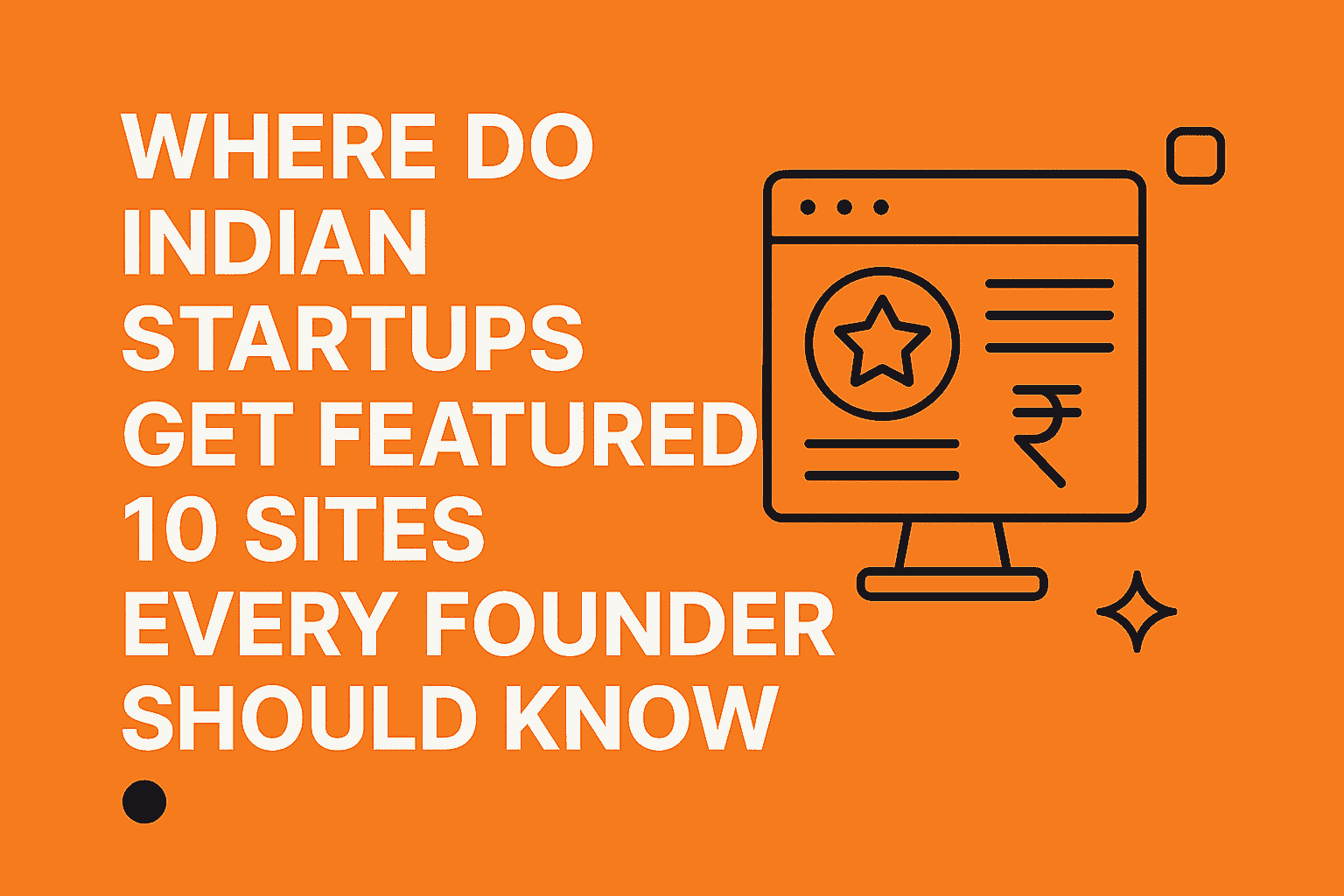In 2025, a growing number of Indian startup founders are learning how to get featured in online business media without hiring expensive public relations agencies. By leveraging DIY PR techniques, digital networking, and storytelling strategies, these founders are earning visibility through authentic and cost-effective methods. The shift toward organic publicity is helping even early-stage entrepreneurs break into mainstream coverage—all without professional media representation.
How Indian Startup Founders Are Getting Featured in News Media Without Agencies
Here’s a breakdown of how Indian founders are succeeding at getting startup news articles published on reputable business websites through self-directed efforts.
Why Indian Entrepreneurs Are Skipping PR Agencies in 2025
Long gone are the days when startups needed large budgets to be featured in business media. In today’s content-rich ecosystem, journalists and digital publications are actively looking for compelling stories, disruptive innovations, and underrepresented voices. This media democratization is allowing founders to:
- Build direct relationships with content creators
- Use startup storytelling tools to their advantage
- Distribute startup press releases without intermediaries
- Submit guest articles through open editorial policies
- Leverage social proof through LinkedIn and digital traction
With these tools, Indian startup founders are crafting and pitching their own narratives, making media access more inclusive than ever.
Creating Founder’s Personal Brand Through Thought Leadership Content
Founders who consistently write and share thought leadership content are more likely to get picked up by startup-focused blogs, entrepreneur news platforms, and business development websites.
Long-tail keyword strategy: “how Indian startup founders build personal brand for media exposure”
Here’s how they’re doing it:
- LinkedIn storytelling: Sharing challenges, breakthroughs, or learnings as threads or posts to build credibility.
- Medium or personal blogs: Publishing articles that address industry trends, founder insights, or startup lessons.
- Podcast interviews: Participating in emerging audio platforms or being interviewed on small business podcast channels.
By putting their unique journey out into the public domain, founders attract journalists who are constantly seeking original voices for feature pieces.
Using Startup Press Release Templates to Get Noticed Online
One popular method among founders is writing their own startup press release using free online templates. These include the basic structure: headline, summary, body content, founder quote, and call to action.
Once created, the press release is distributed through:
- Direct submission portals of startup-focused websites
- Email pitches to freelance journalists or business editors
- Startup directories with news sections for small businesses
- LinkedIn posts that tag relevant reporters or influencers
By learning basic media writing formats, Indian entrepreneurs are bypassing traditional PR agencies and speaking directly to digital news outlets.
Getting Featured by Telling Stories, Not Just Sharing Announcements
Founders are also learning that news coverage isn’t just about product launches or business growth. What resonates with readers—and journalists—are emotionally compelling, human-centered stories.
They are increasingly focusing on:
- Founder origin stories rooted in personal or cultural values
- Challenges overcome during the early days of bootstrapping
- Community-driven business models or social entrepreneurship
- Unique founder backgrounds from rural, student, or women-led ventures
This narrative-first approach helps media platforms connect with the “why” behind the startup—making stories more publishable.
Building Relationships with Journalists via Social Media Engagement
Today’s media landscape is not closed off behind gates. Founders are engaging with journalists on Twitter, LinkedIn, and Instagram—replying to their posts, sharing articles, and even sliding into DMs respectfully with pitch ideas.
Steps often include:
- Following journalists who write about entrepreneurship
- Commenting insightfully on their work
- Reaching out with personalized, relevant pitch emails
- Keeping follow-ups respectful and value-driven
Many founders report that a strong digital presence and genuine engagement often lead to coverage without needing formal introductions or retainers.
Utilizing Startup Competitions and Events to Attract Organic Media Attention
Participating in virtual startup summits, pitch competitions, or innovation forums often brings founders into the radar of content writers and industry bloggers.
These forums usually have:
- Media partnerships that result in listicle mentions or founder features
- Community forums that document winning pitches or founder talks
- Event-based blogs that highlight participant startups with unique models
By showing up at the right platforms, founders organically attract the eyes of content curators and editors who are constantly scanning these events for their next big story.
Submitting Guest Articles or Founder Columns to Niche Platforms
Many digital business magazines in India now accept guest articles, founder op-eds, and educational content from entrepreneurs.
This path requires:
- A clearly written proposal with the topic and its value to readers
- A draft that is original, non-promotional, and insight-rich
- Following editorial guidelines and building a publishing relationship
Once a founder’s byline is published, it adds to their credibility and increases chances of future interviews or profile features.
Amplifying Published Coverage for Long-Term Media Momentum
When a founder does earn media coverage, they actively amplify it on social channels, startup forums, and through email marketing. This not only boosts reach but also signals to other journalists and bloggers that the founder is a valuable subject.
Effective amplification includes:
- Posting the article link with a reflective post on LinkedIn
- Quoting a section in pitch decks or investor updates
- Tagging the author and platform to show appreciation
- Including media logos or headlines on the startup website
This ongoing loop of visibility helps founders stay relevant in the eyes of future content creators.
In 2025, the media landscape has evolved—and so have startup founders in India. With the right approach, even early-stage entrepreneurs can earn media features by focusing on authenticity, consistency, and strategic storytelling.
By mastering:
- The basics of PR writing
- The art of organic networking
- The value of narrative-driven branding
- The power of digital engagement
They’re building what agencies used to offer—credibility, exposure, and audience reach—all on their own terms.
The shift is not just cost-saving. It’s culture-shaping. Because when founders take charge of their own voice, the ecosystem becomes more diverse, more inclusive, and more inspiring.



